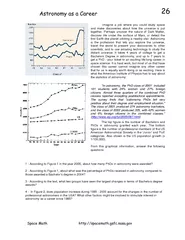PDF-Imagine a job where you could study space and make dis
Author : celsa-spraggs | Published Date : 2015-05-01
Perhaps uncover the nature of Dark Matter discover life under the surface of Mars or detect the first Earthlike planet orbiting a nearby star Astronomy is the profession
Presentation Embed Code
Download Presentation
Download Presentation The PPT/PDF document "Imagine a job where you could study spac..." is the property of its rightful owner. Permission is granted to download and print the materials on this website for personal, non-commercial use only, and to display it on your personal computer provided you do not modify the materials and that you retain all copyright notices contained in the materials. By downloading content from our website, you accept the terms of this agreement.
Imagine a job where you could study space and make dis: Transcript
Download Rules Of Document
"Imagine a job where you could study space and make dis"The content belongs to its owner. You may download and print it for personal use, without modification, and keep all copyright notices. By downloading, you agree to these terms.
Related Documents













![[EBOOK] - GET THAT JOB! ACE Your JOB Interview - Every Time!: First Job Interviewing](https://thumbs.docslides.com/905278/ebook-get-that-job-ace-your-job-interview-every-time-first-job-interviewing-tips-job-interview-weaknesses-key-job-intervi.jpg)
